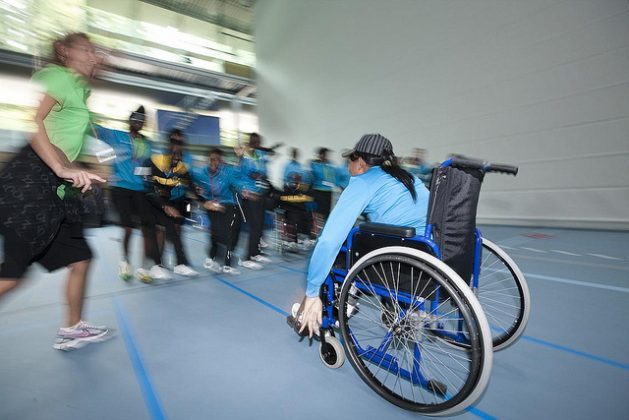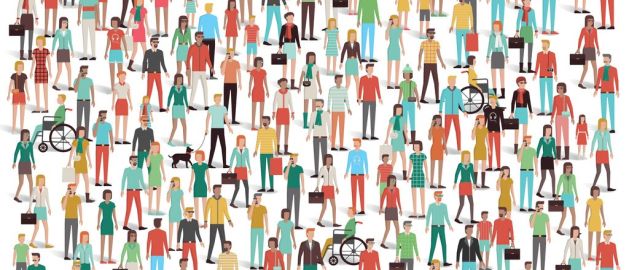Asia-Pacific, Civil Society, Headlines, Labour, Regional Categories, TerraViva United Nations

Courtesy: United Nations
– As companies begin to focus on hiring people with disabilities, we need to shape how they think and act on this interest.
In the first decade of this century, Andhra Pradesh had several self-help groups (SHGs)–women who were saving, borrowing, and generating livelihood opportunities for themselves as well as their communities.
As these groups grew, the government began to notice that the aspirations of children were different from their SHG-member mothers, who were mostly marginal farmers or weavers. The state felt that they needed to do something to fulfil these aspirations and from this was born the Employment Generation and Marketing Mission (EGMM)–a skilling mission under the Department of Rural Development in undivided Andhra Pradesh.
EGMM started in 2004 with a pilot–a Rural Retail Academy was set up in Warangal for youth who were 10th and 12th standard dropouts; local school teachers were taught to train them on customer-facing skills, and after six months they were ready to be placed.
Kishore Biyani of the Future Group was the first one to hire these young people, and him doing so changed the way India looked at rural youth. It made people realise that: a) you didn’t need graduates with degrees for customer service, and b) rural youth, if skilled right, could get formal private sector jobs.
Prior to the establishment of the EGMM, government skilling programmes didn’t think of job placement as something they were responsible for. All of them did skilling for skilling’s sake. Now placement has become the norm in every skilling programme offered by either the government or the private sector.
EGMM was also able to demonstrate innovation at scale. However, it’s relatively easy to achieve scale when you are sitting inside the government. When I thought of what to focus on after rural youth, it was important for me to enter a space where there wasn’t an existing model for scale, and to prove that it could be done outside of the government as well. Disability was that space.
Moving to disability
The statistics around disability are alarming–80 percent of the world’s disability population is in developing countries like India. Despite this, a decade ago, little was being done about it.
Cities with a booming IT industry like Bangalore and Delhi, had organisations training and placing disabled people in jobs, but this was limited to 30 people a year at best. And, most of them were urban and educated. However, 69 percent of the disabled youth in India live in the villages–and at the time, in 2012, nobody was focusing on less-educated rural youth with disability.
There were many challenges
When we went to the villages, we faced several obstacles:
- Getting youth to join: Disabled youth who lived in rural areas were doubly disadvantaged: they were cut off from the job market because of their rural location, and they (and their families) didn’t believe that they could ever get a job.
- Finding trainers: We were also faced with a shortage of people who could train these youth. Disability is one word but within that word there are different kinds of disability–speech impaired, visually challenged, physical disabilities, and so on–and each one of them has different needs. Even when we did find trainers who could work with disabled youth–sign language instructors, for example–they were ill-equipped to train in the short-term training formats that we had developed.
- Providing them job opportunities: Companies came with a lot of mindsets. They would ask us “Can you give us youth who look like you and me? Will it be expensive to hire and manage them? Will my other employees have a problem if I hire your youth?”
There is a gap in the urban disabled space as well
As we started working with the corporates, some multinational companies started asking us, “Where are the youth with English, the ones who are educated?” The perception is that if the disabled youth are educated, they will perhaps get jobs on their own.
However, in most cases, educated youth with disability have low skill levels. They qualify as engineers, have an engineering certificate and so their aspirations are to get into the well-known global and Indian tech companies. However, their technical knowledge is poor since colleges don’t have special educators to guide them.

The perception is that if the disabled youth are educated, they will perhaps get jobs on their own. However, in most cases, educated youth with disability have low skill levels. Picture courtesy: Rawpixel
The market is beginning to think about disability more actively
We are hearing companies talk about focusing on disability. So, while the timing is right, we need to shape how companies think and act on their interest.
Here are a few approaches that skilling organisations that work with disabled youth can adopt to ensure that larger numbers of corporates hire and retain these young people and that they do it in the right manner.
1. Try to place youth with disability in customer-facing roles
When they have to interact with customers, awareness about the issue of disability goes up automatically; you don’t have to work on that separately. We piloted this hypothesis by placing a speech- and hearing-impaired individual in a cashier’s job, with some simple workplace adaptations.
Three months later the retailer ran a survey to ask their customers for feedback and 95 percent of the respondents said that having ‘silent’ cashier had led to faster service. This insight–higher efficiencies, near-zero errors in an industry where margins are small–opened up almost 50,000 cashiering jobs for disabled youth in the retail sector.
2. Create a sensitive ecosphere
Hiring youth with disabilities is not just about matching profiles to jobs. We do sensitisation workshops, low cost adaptations, accessibility audits, going as far as to sync companies’ existing software to ensure that hired youth are productive. Otherwise, it merely reiterates the myth that youth with disabilities cannot work.
3. Build up jobs sector by sector
We did this with the automotive industry. We started with one company–Valeo–and hardwired all our best practices over there. More importantly, their HR director and I started talking about these innovations and the value provided by these youth at conferences and forums. As a result, 15 more auto companies started hiring disabled youth.
4. Teach portable skills and not specific job skills
Typically, skilling organisations give youth job-specific training–like say a three-day training in folding clothes. However, the danger with this approach is that if the folding clothes process stops, so does their job. It is important therefore, irrespective of the sector, to teach English, communications, and life skills–skills that they can take across jobs. This allows them to be mobile across jobs and capitalise on the opportunities available.
5. Encourage companies to measure impact
An executive from a multinational company that we at Youth4Jobs work with said that our alumni manage 75 forms a day versus their average of 45-50. Once companies experience the business case and see the results, their senior executives become champions for the programmes.
6. Prepare companies to be ready for changes in the law
It is likely that one day, a particular state might suddenly decide to make hiring of disabled youth mandatory in sync with the Right to PwD Act 2016 which speaks to the right of disabled to education and employment. And if that happens, other states will follow. It is important that companies are ready for it when it happens.
Meera Shenoy is the founder of Youth4Jobs, where she works on skilling young people with disabilities. She has been at the forefront of job-linked skilling for rural youth, tribal youth, and now youth with disabilities, at a scalable level. She was previously Executive Director, Employment Generation and Marketing Mission (EGMM), the first state government skilling mission. Meera has also consulted with the World Bank and the UNDP.
This story was originally published by India Development Review (IDR)
